
Janus Henderson: Chinese money trends - policy easing too little
Chinese August money numbers were surprisingly weak, suggesting that the economy will continue to lose momentum into early 2019, despite a recent shift towards policy easing.
21.09.2018 | 12:16 Uhr
Annual growth of narrow money – as measured by true M1* – fell to 4.3% in August and is approaching levels reached in late 2014 / early 2015, ahead of the 2015-16 hard landing scare. Nominal GDP expansion has been following narrow money growth lower and may weaken significantly further by early 2019 – see first chart.
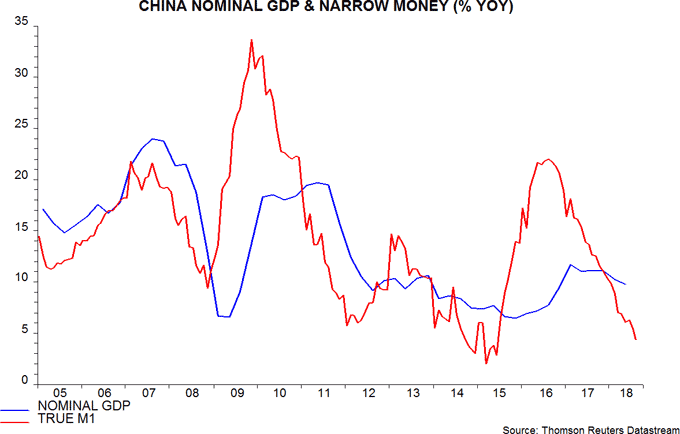
Shorter-term money growth rates also eased: six-month expansion fell to 1.1%, or 2.3% at an annualised rate, again the lowest since 2015. Real-terms growth – relative to consumer prices – is approaching zero.
Recent falls in interest rates suggest a revival in money trends but the timing and magnitude are uncertain – second chart. Even if growth were to pick up from September, a recovery in economic momentum would be unlikely before spring 2019.
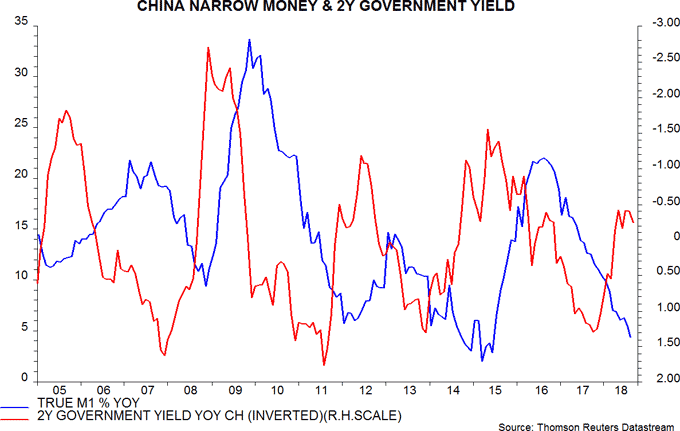
Historically, monetary policy loosenings have involved relaxation of quantitative controls on credit creation as well as lower rates. The clampdown on shadow banking activity, however, continues, with weakness in this sector offsetting a recent slightly faster pace of bank lending growth: annual expansion of total social financing fell further to 9.5%** in August, a record low in data extending back to 2004.
Without accompanying credit loosening, PBoC liquidity injections and lower rates may have a delayed and muted impact on monetary trends and, by extension, economic activity.
The narrow money slowdown has been broadly based across its components – currency in circulation and corporate / household demand deposits. Deposit growth of non-financial enterprise is particularly weak – only an annual 0.4% in August.
Annual growth of broad money has been stable in recent months but at a weak level by historical standards. Headline M2 expansion has been supported by a rapid rise in financial sector deposits; the non-financial M2 measure preferred here rose by only 7.3% year-on-year in August – third chart.
Optimists expect infrastructure spending to boost the economy later in 2018 but state-led fixed asset investment continued to fall year-on-year in August – fourth chart. Private investment growth remained solid but slowing enterprise money trends suggest weakening prospects.
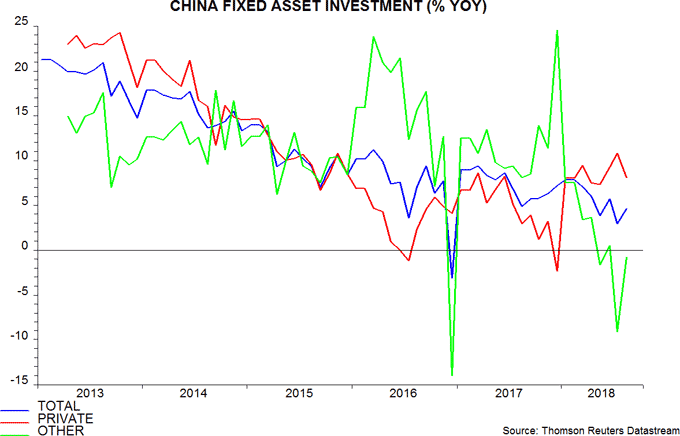
Housing activity has been stronger than expected here so far in 2018 but annual sales growth fell back in August and may be signalling a peak in price inflation – fifth chart. Recent rapid price gains have probably contributed to the authorities’ reluctance to lift credit restraints.
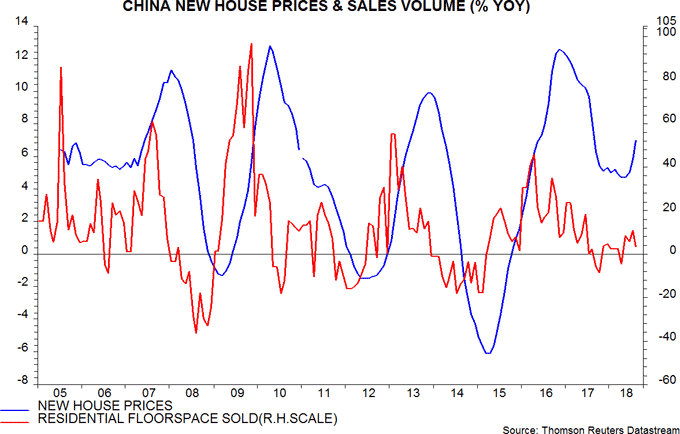
The monetary signal of a further economic slowdown is supported by the latest reading of an alternative composite leading indicator discussed in a previous post. To recap, the OECD’s composite leading indicator may no longer be reliable given structural shifts in the Chinese economy. The alternative indicator attempts to replicate the components of the OECD’s US leading indicator, with the aim of achieving broader economic coverage. The alternative indicator moved sideways in 2017 / early 2018 but has fallen significantly since March, suggesting below-trend economic expansion – sixth chart.
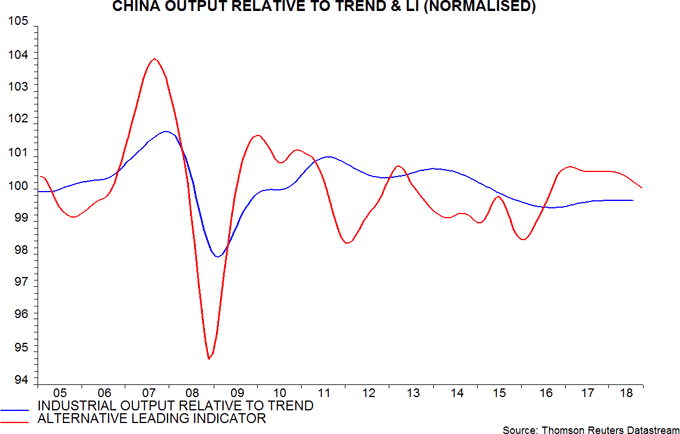
Five of the six components of the alternative leading indicator have weakened recently, the exception being the slope of the yield curve. The latest reading was dragged down by weakness in domestic orders and future income confidence in the PBoC’s third-quarter business and consumer surveys respectively, released over the weekend.
*True M1 = official M1 plus household demand deposits. Official M1 = currency in circulation plus demand deposits of non-financial enterprises and government organisations.
**Old basis. 10.1% on new basis including asset-backed securities and loan write-offs. New basis unavailable before 2017.





Diesen Beitrag teilen: